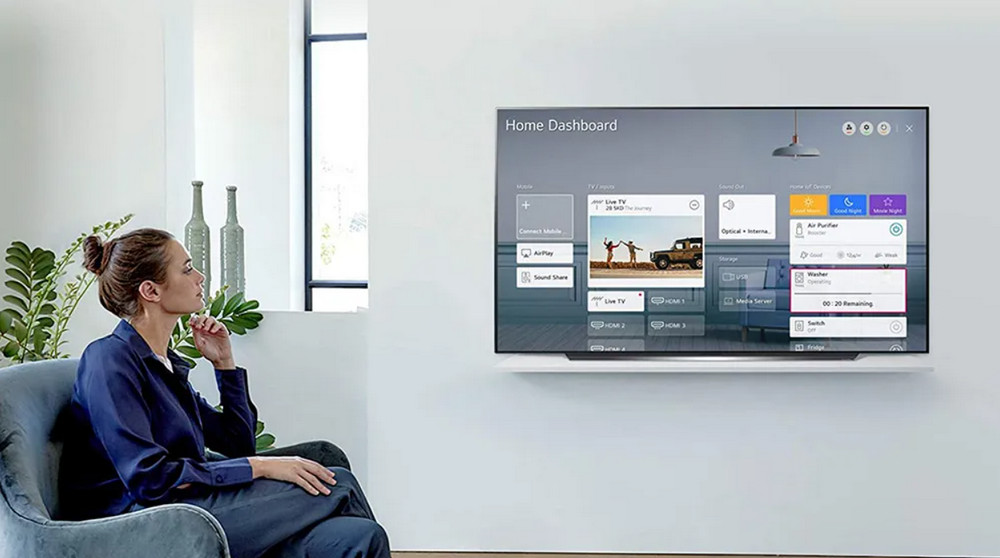DRM and Smart TVs — why Sigma Multi-DRM is the answer. As an increasing number of viewers opt for content consumption through Smart TVs, the adoption of Multi-DRM emerges as the essential solution to address the growing fragmentation within the broadcast ecosystem.
The Curent Sistuation
In recent years, a fundamental shift in the industry has been driven by the widespread adoption of Smart TVs. The prevalence of Smart TVs has led to a significant increase in viewers accessing linear television and streaming services.
In the UK, Smart TVs now dominate the majority of TV viewing, while in the US, half of broadband households possess one, and 77% of those sets are internet-connected, totaling just over 80 million. Meanwhile, in Vietnam, approximately 60% of families own two or more cars, with 25% of households in major cities (Hanoi, Ho Chi Minh City, Da Nang) having up to 3-4 cars at home.
Sales continue to show an upward trend. With 198 million sets shipped in 2018, projections indicate an increase to 266 million by 2025, constituting a significant portion of the total global TV set shipments.
These television sets, featuring app-based ecosystems, contribute significantly to the widespread adoption of cord-cutting and cord-shaving. Leading manufacturers often pre-install apps for major OTT players on both international and national levels, facilitating easy access to popular content. Expanding the range of apps and accessing additional content is a straightforward process through the television’s user-friendly app store within the UI.
However, a challenge arises within this narrative of success, particularly concerning the safeguarding of video content through Digital Rights Management (DRM) in the emerging and prevailing broadcast ecosystem.
What is the problem of DRM on Smart TVs
The challenge lies in the transition from the Set-Top Box-centric broadcast landscape, largely overseen by broadcasters and operators as equipment providers, to the consumer-driven Smart TV market. With the shift of video service delivery from the STB to the Smart TV, elements like content protection have now moved beyond the operators’ sphere of influence.
The existing content protection relies on the discretion of set manufacturers, and its implementation appears somewhat improvised. As discussed in the following section, a solution effective on one set may not necessarily function on another.
Several intricacies are woven into the process. Hollywood Studios, for example, demand a form of hardware anchorage to secure the premium 4K content driving Smart TV sales. This often entails an HDCP 2. x ‘handshake’ before the signal can extend to another device, like a soundbar. Conversely, various OTT operators aim to ensure their content can directly reach viewers’ screens without any external interventions.
The outcome is such that DRM could be likened to Digital Rights Disarray. A telling example of the entire scenario unfolded in November 2019 when numerous Smart TV owners were greeted with an abrupt error message announcing, ‘Netflix will cease to be accessible on this device after December 1st, 2019.’
What to look for in a Multi-DRM solution
Multi-DRM addresses the challenges arising from fragmentation in digital rights management within the Smart TV market. Essentially, it reinstates plug-and-play functionality for the sets, guaranteeing viewers seamless access to your content across various platforms. If you’re considering implementing your own Multi-DRM solution, here’s a brief checklist to guide you.
Comprehensive Support
An effective multi-DRM solution should encompass broad compatibility with the most prevalent DRM systems in the market. Presently, this entails seamless integration with Widevine, PlayReady, and FairPlay.
Forward Compatibility
However, its capabilities should not be restricted to just these three. Anticipating potential new demands, particularly as Hollywood studios intensify efforts against content theft, a Multi-DRM solution must exhibit agility and responsiveness to evolving requirements.

Scalability
The solutions must demonstrate the capability to manage peak volumes of DRM license issuance swiftly, minimizing latency, especially during live events. As an illustration, our collaboration with Orange involved the issuance of 1.75 billion Multi-DRM licenses, averaging 55 per second over an entire 12-month period. Peak flows, as observed during a prominent global soccer tournament, could escalate significantly, reaching up to 1000 licenses per second for a single broadband client.
Advanced Security Capabilities An exemplary multi-DRM solution should extend beyond fundamental delivery assurances, incorporating advanced features like device authentication and comprehensive multi-DRM management. This holistic approach enhances content security. For example, at VO, we can integrate Dynamic Watermarking seamlessly when apps are constructed using the VO Player, adding an extra layer of protection.
Multi-DRM & Smart TV – an Opportunity
One crucial aspect worth highlighting is the resilience of Multi-DRM in the Smart TV landscape. Despite the extensive efforts dedicated to HDCP, its long-standing vulnerabilities and susceptibility to various attack vectors within the STB broadcast ecosystem have been evident. Notably, restreaming, in particular, remains a relatively straightforward challenge.
In contrast to Set-Top Boxes (STBs) featuring numerous outputs, Smart TVs represent the ultimate endpoint for video delivery. Unlike STBs, smart sets don’t necessitate built-in video outputs, eliminating the possibility of unauthorized content recording through conventional means.
The potential avenue for circumventing this, such as using a camcorder or mobile phone, can be effectively thwarted using technologies like Dynamic Watermarking. This system assigns a unique ID to each Smart TV, enabling rapid source identification and real-time detection of any attempted content theft.
The irony that Smart TVs could aid in anti-piracy endeavors while the ongoing initiatives to enforce content protection have, at times, rendered Smart TVs challenging to navigate is a characteristic twist that technology occasionally presents.
Smart TVs currently hold a dominant position in the market, and their prominence is expected to increase in the years ahead. However, there is no indication of future standardization on DRM protocols, and it remains uncertain whether all manufacturers will universally support the various competing systems available. Consequently, embracing Multi-DRM emerges as the sole practical choice for broadcasters and operators aiming to deliver services to the widest audience possible.
What do we do with Sigma Multi DRM and Smart TVs

- Sigma Multi DRM provides innovative video tech solutions for education &
- media businesses to help them serve content on their site/app with
- Hollywood-grade security, refinement, and functionalities.
- A combination of Hollywood standard DRM directly licensed with
- Google & Apple & proprietary viewer-specific watermarking ensure
- highest security.
- Features Siga Multi DRM and Smart TVs
- Robust industry-standard license key delivery.
- Scalable, secure, and short deployment window.
- In-network, in-the-cloud, on-premise, on your hardware/software.
- Support for a wide array of popular playback platforms.
- Support for a wide array of popular desktops, devices, Smart TVs, and consoles.
- Designed for Docker deployment on Windows and Linux.
- Software licensing model with annual support and maintenance.
Add on
- Support rotation key.
- Support license persistent
- Support license renewal
- Support multiscreen
- Support multiple encrypt keys per profile.
- Support encrypt license with Widevine on Android devices.
- Whitelist location
- Whitelist Android application by package ID, and package name.
- Whitelist website by domain.
- Provide a tool to inspect info from PSSH, license requests, and license response
- Provide Player to test packager integration.
How to integrate with Sigma Multi DRM
To integrate with Sigma Multi-DRM, follow these steps:
Configuration on Portal:
Begin by configuring the Sigma Multi-DRM settings on the portal. This involves setting up the necessary parameters, such as security policies, encryption keys, and licensing options. Ensure that the configuration aligns with your content protection requirements.
Integration with Packager:
Integrate Sigma Multi-DRM with your content packager. The packager is responsible for preparing and encrypting the content for distribution. Ensure that the packager is configured to communicate with the Sigma Multi-DRM system to obtain the required DRM protection for the content.
Integration with Backend:
Establish integration between Sigma Multi-DRM and your backend systems. This involves connecting the DRM solution with your content management system (CMS), user authentication system, and any other backend components. Ensure that the backend can communicate effectively with Sigma Multi-DRM for tasks such as license issuance and user authentication.
Integration with Client:
Implement the necessary integration between Sigma Multi-DRM and the client-side applications. This includes Smart TVs, streaming devices, or any other platforms where users will access the protected content. Integrate the client-side applications with Sigma Multi-DRM for secure content playback and license acquisition.
Test & Release:
Conduct thorough testing to ensure that the integration works seamlessly across all components. Test various scenarios, including different devices, content types, and network conditions. Address any issues or bugs that may arise during testing. Once the testing phase is successful, proceed with the release of the integrated system.
Remember to adhere to best practices for security and compliance throughout the integration process. Additionally, documentation provided by Sigma Multi-DRM should be consulted for specific details and guidelines related to the integration steps. Regularly update and maintain the integration to accommodate changes in DRM standards, security requirements, and any updates from Sigma Multi-DRM.
Above is information about Sigma Multi DRM and Smart TVs. Hope to help readers gain more knowledge and useful information. To learn about DRM solutions. Please refer and see more at the website address: thudomultimedia.com for quick consulting support.
Or booking a meeting with our consultant for further details!
See more articles:
The Future of Digital Content Security with Sigma Multi-DRM


Recent Comments